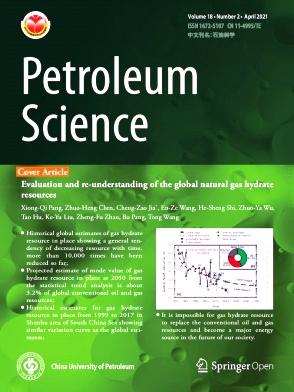Formation mechanism and reservoir quality evaluation in tight sandstones under a compressional tectonic setting: the Jurassic Ahe Formation in Kuqa Depression, Tarim Basin, China
IF 6
1区 工程技术
Q2 ENERGY & FUELS
引用次数: 0
Abstract
The northern structural belt of Kuqa Depression is adjacent to the South Tianshan orogenic belt, which are characterized by complex geological conditions. The reservoir quality of the Jurassic Ahe Formation is controlled by sedimentation, diagenesis, and tectonics, and show complex pore structure and strong heterogeneity, thereby hindering effective natural gas exploration and development. Core, thin sections, cathodoluminescence (CL), scanning electron microscopy (SEM), conventional well logs and image logs are used to characterize the petrological characteristics and pore systems. Then a comprehensive analysis integrating sedimentation, diagenesis, and tectonics is performed to unravel the reservoir formation mechanism and distribution of reservoir quality. Results show that reservoir properties are generally environmentally selective. Coarse grained sandbodies (gravelly sandstones) formed in high depositional-energy have the best physical properties, while fine sandstone and mudstone with low depositional energy is easily to be tightly compacted, and have poor reservoir quality. Porosity usually decreases with compaction and cementation, and increases due to dissolution. Clay minerals filling pores result in a deterioration of the pore structure. Microfracture formed by fracturing can connect the matrix pores, effectively improving the reservoirs’ permeability. The differential distribution of fractures and in-situ stress plays an important role in modifying reservoir quality. The in-situ stress has obvious control over the matrix physical properties and fracture effectiveness. The matrix physical properties are negatively correlated with the value of horizontal stress difference (Δσ). As the value of Δσ increases, the pore structure becomes more complex, and the macroscopic reservoir quality becomes poor. The smaller the strike divergence between the natural fracture and SHmax, the lower the value of Δσ in the fracture layers is, and the better the fracture effectiveness is. Under the control of ternary factors on the reservoir, sedimentation-diagenesis jointly affect the matrix reservoir quality, while fractures and in-situ stress caused by tectonism affect the permeability and hydrocarbon productivity of the reservoir. Affected by ternary factors, reservoir quality and hydrocarbon productivity show obvious differences within the various structural location. Reservoir quality in tight sandstones can be predicted by integrating sedimentation, diagenesis, and tectonics (fracture and in-situ stress) in a compressional tectonic setting like Kuqa Depression. The research results will provide insights into the efficient exploration of oil and gas in Kuqa Depression as well as similar compressional tectonic settings elsewhere.
求助全文
约1分钟内获得全文
求助全文
来源期刊

Petroleum Science
地学-地球化学与地球物理
CiteScore
7.70
自引率
16.10%
发文量
311
审稿时长
63 days
期刊介绍:
Petroleum Science is the only English journal in China on petroleum science and technology that is intended for professionals engaged in petroleum science research and technical applications all over the world, as well as the managerial personnel of oil companies. It covers petroleum geology, petroleum geophysics, petroleum engineering, petrochemistry & chemical engineering, petroleum mechanics, and economic management. It aims to introduce the latest results in oil industry research in China, promote cooperation in petroleum science research between China and the rest of the world, and build a bridge for scientific communication between China and the world.
 求助内容:
求助内容: 应助结果提醒方式:
应助结果提醒方式:


